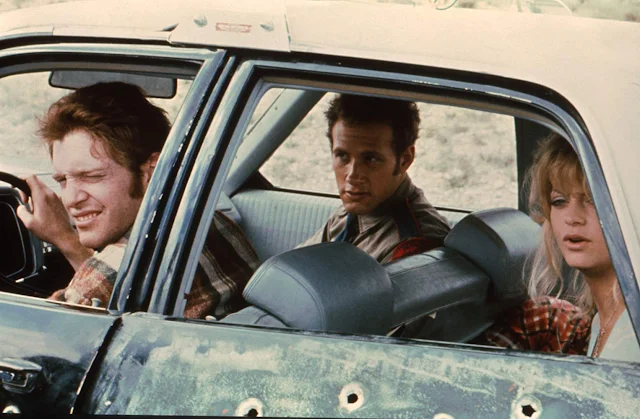 |
| Tom Courtenay and Julie Christie in Billy Liar |
Tom Courtenay's performance as a Yorkshire Baron Munchausen and Julie Christie's smallish role as the former girlfriend who almost rescues him from a life of boredom and mendacity went a long way toward establishing them as major British stars of the 1960s. Courtenay's about-face from the seriousness of The Loneliness of the Long Distance Runner (Tony Richardson, 1962) to the comedy of Billy Liar singled him out as an actor of great versatility. Christie would follow her role as the devil-may-care Liz by winning an Oscar for another John Schlesinger film, Darling (1965), in which she revealed the unhappy emptiness behind the façade of celebrity. But they're hardly the only fine performances in this exploration of the consequences of tedium in a provincial town where London looms like Moscow in Chekhov's The Three Sisters. Mona Washbourne and Wilfred Pickles are Billy Fisher's exasperated parents, Ethel Griffies his garrulous grandmother, and Gwendolyn Watts and Helen Fraser are the highly contrasting young women Billy has managed to get himself engaged to -- one of his less disastrous escapes into his fantasy world. It's a comedy with an edge, but it never lets that edginess overwhelm the comedy, keeping a nice balance of both. I'm not a big fan of Schlesinger's more celebrated films Darling and Midnight Cowboy (1969), in which I think he loses control of the tone too often, but Billy Liar seems to me to get it just right.








